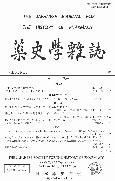48 巻, 2 号
選択された号の論文の13件中1~13を表示しています
- |<
- <
- 1
- >
- >|
-
2013 年 48 巻 2 号 p. 99-107
発行日: 2013年
公開日: 2020/12/30
PDF形式でダウンロード (1876K) -
2013 年 48 巻 2 号 p. 108-113
発行日: 2013年
公開日: 2020/12/30
PDF形式でダウンロード (1565K) -
2013 年 48 巻 2 号 p. 114-115
発行日: 2013年
公開日: 2020/12/30
PDF形式でダウンロード (1617K) -
2013 年 48 巻 2 号 p. 116-125
発行日: 2013年
公開日: 2020/12/30
PDF形式でダウンロード (1627K) -
2013 年 48 巻 2 号 p. 126-139
発行日: 2013年
公開日: 2020/12/30
PDF形式でダウンロード (1633K) -
2013 年 48 巻 2 号 p. 140-150
発行日: 2013年
公開日: 2020/12/30
PDF形式でダウンロード (1867K) -
2013 年 48 巻 2 号 p. 151-159
発行日: 2013年
公開日: 2020/12/30
PDF形式でダウンロード (1982K) -
2013 年 48 巻 2 号 p. 160-165
発行日: 2013年
公開日: 2020/12/30
PDF形式でダウンロード (1727K) -
2013 年 48 巻 2 号 p. 166-168
発行日: 2013年
公開日: 2020/12/30
PDF形式でダウンロード (1556K) -
2013 年 48 巻 2 号 p. 169-174
発行日: 2013年
公開日: 2020/12/30
PDF形式でダウンロード (1712K) -
2013 年 48 巻 2 号 p. 175-179
発行日: 2013年
公開日: 2020/12/30
PDF形式でダウンロード (1562K) -
2013 年 48 巻 2 号 p. 180-201
発行日: 2013年
公開日: 2020/12/30
PDF形式でダウンロード (3811K) -
2013 年 48 巻 2 号 p. 203
発行日: 2013年
公開日: 2020/12/30
PDF形式でダウンロード (1541K)
- |<
- <
- 1
- >
- >|
